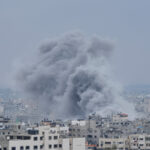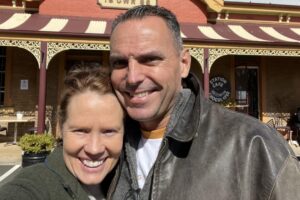ESTATES usually provide a medical clinic for their workers. Mine had one, too.
Bukit Jalil estate and Bukit Kinrara estate each had a clinic; both under the same owners but different managers.
The Bukit Jalil estate clinic was a simple one-room wooden structure, measuring 30ft by 15ft, with a wooden partition in the middle separating the waiting area and the examination room.
The cemented floor always looked clean and it had a typical “Dettol” fragrance. The clinic was painted creamy yellow with brown clay-tiled roofing and a Red Cross sign neatly placed on the left side of the entrance.
A hospital assistant (HA) would come to our clinic twice a day, at 9am and again at 4pm, without fail. He came from the neighbouring Bukit Kinrara estate and stayed in a house provided by the estate management.
A handsome man in his early 20s, standing 5-feet-6-inches tall, Rajan Pillai was always dressed in a white shirt and khaki shorts.
He sported a well-trimmed moustache with sleek sideburns and neatly combed hair.
A qualified first-grade HA, he spoke good English and Tamil, and plied between the estates on a motorcycle.
I had always wondered why Mr Rajan was not called Dr Rajan; after all, the person who treats the sick in a clinic should be a doctor. It was only later that I realised a hospital assistant is trained to treat non-critical cases in remote areas, where hospitals were scarce, especially in the estates.
HAs also served at hospitals and in other medical fields.
They not only treated those who were sick, but also issued medical certificates (MC) to those who required medical leave from school or work.
I used to get my MC from the HA whenever I was down with the flu or a fever.
On a normal day, the clinic would welcome 10 to 15 patients, ranging from infants to the elderly. Each patient would be attended to and treated in not more than 30 minutes.
There was no need for long queues or a numbering system; Rajan would just acknowledge anyone who turned up at the clinic.
He knew his patients by name. The patients would address him as aayah, which is the highest form of respect for authorities or officers given by the estate workers.
No one ever seemed to have to rush to see the HA unless their pain or injury was critical. Everyone was patient and calm, knowing they would soon be attended to and treated efficiently and effectively.
Most of the time the patients would go to the clinic for common ailments like fever, cough and flu, stomach-aches and body aches, minor cuts and bruises, or to check their blood pressure.
In the event of a more serious condition, the patient would be referred to the general hospital in Kuala Lumpur.
Residents from the nearby estate lines (divided tenements of barrack-like structure also called ‘line houses’ or layams) would walk to the clinic; men in their thin, cotton-white T-shirts and chequered sarong; ladies in blouses and floral batik sarong. The elderly women usually had a towel over their blouses.
I could always tell when infants were treated as their screams could be heard from afar, especially if they were getting their immunisation injections.
The HA was highly regarded as he seemed to have a solution for almost every ailment. For those with fever, two paracetamols, cough syrup and antibiotics would do the trick. The patients would be back on their feet in a day or two.
For a patient like me, who was always susceptible to the flu and cough, he would provide thick cough syrup and apply a golden-brown liquid called Mandl’s Paint in the throat using a short stick with some cotton at one end. This was a unique way of treating a sore throat. A wonderful medicine from a wonderful HA.
Whenever I had to receive injections, I would cringe. But I would also be in awe as I watched him prepare the injection.
Rajan would take a needle and place it in a kidney-shaped tray filled with boiling water heated over a Bunsen burner. Then he would attach it to a glass syringe (no plastic in those days) and fill it up with a drug or vaccine. Those days, the needle and syringe were reused after sterilisation. AIDS was not heard of or even present in our lives then.
Rajan had a very calm and confident manner when dressing cuts and wounds, so much so that he managed to arrest the pain and panic in his patients.
When I was 16 years old, I fell off my bicycle on the way to school, bruising my hand, face and legs. My cousin helped me ride back home.
My mum took me to the clinic. The HA applied some iodine to the bruises and gave me Panadol to be taken after meals. Luckily, no sutures were necessary. That incident earned me two days of medical leave and another moment of admiration for this young and clever HA.
Another incident was when I was around 11 or 12 years old. I had injured my right palm while cutting down a tree branch with a chopper. The branch fell on my palm, and its splinters tore my skin about 2.5 inches wide and about half an inch deep, and blood was oozing out.
Back then we had no telephone, so my father asked my uncle to take me to Bukit Kinrara estate, where the HA was staying. It was around 3.30pm. My late uncle (Sankaran Nair) tied a cloth around the wound and rushed me to the estate on his dark green Suzuki motorcycle.
To our dismay and my aggravated pain, the HA was not there. My uncle then took me home. My mum dressed the wound with some ground turmeric paste and margosa leaves, and I had to endure a very painful night till the next morning, when the HA came to the clinic. He looked at the deep gash and dressed it, explaining that it could not be sutured as it was too late to do so.
His treatment of the wound immediately relieved the pain. The next few days of dressing put me at ease as each time he assured me that the wound was healing well and that all would be good again.
The estate children had a unique issue with bloated tummies. At the clinic, Rajan would give them a syrup to consume. The very next day, when they relieved themselves, worms could be seen crawling out of their excrement!
These were tapeworms that grew inside the stomach of children due to poor hygiene and sanitary conditions.
One amusing “treatment” administered by Rajan was to the elderly bare-chested men clad only in sarong, who would go to the clinic cringing in pain while holding their stomach. Some were seasoned alcoholics, and the HA would casually say, “No medicine for you as you have had yours!”
I grew up admiring this HA as the sole guardian of 100 families in our estate. He helped the poor workers to lead a good life despite the squalid conditions and laborious lifestyle.
I miss those days at the estate, and I miss the humbleness of the HAs. They may not have had much in terms of money, but their kindness and care were just two of their priceless assets.
They were mostly in their late 30s and 40s then, but there are not many left in the estate any more. Most of them have left us all after doing only one thing… working as rubber tappers in the estate called Bukit Jalil.
Believe me, my dear neighbours, although many of you may have left this mortal world, there is still a soul here who fondly thinks of you and our way of life back then.
I was blessed to have the opportunity and honour to meet Rajan recently for a cup of coffee and to catch up on old times. Thank you, sir, for keeping us well and safe. He is reaching 80 and still keeping great.
Source : Straits Times






































